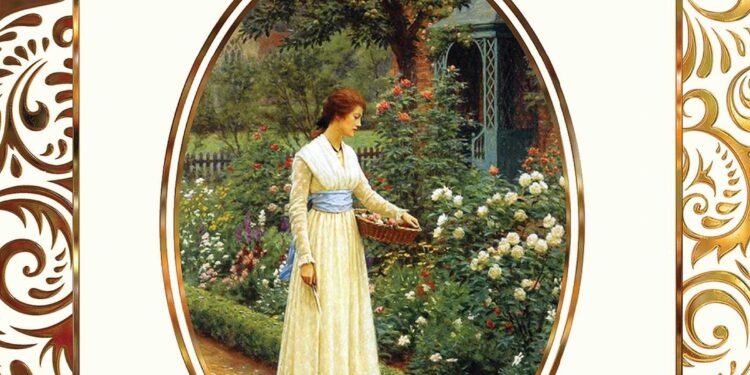Northanger Abbey by Jane Austen
Jane Austen’s “Northanger Abbey” is a delightful novel that combines romance, satire, and a touch of Gothic mystery. Published posthumously in 1818, this charming work explores the coming-of-age story of Catherine Morland, a young woman with a vivid imagination and a penchant for Gothic novels. Join us as we delve into the world of “Northanger Abbey” and discover the wit, humor, and social commentary that make it a beloved classic.
A Heroine of Innocence and Imagination
In “Northanger Abbey,” Jane Austen presents readers with a heroine who stands apart from her other female protagonists. Catherine Morland, the novel’s central character, is a refreshing blend of innocence and imagination. Unlike Austen’s more sophisticated heroines, Catherine possesses a youthful naivety and an unbridled imagination that captivate both the readers and the characters within the story.
Catherine’s innocence is evident from the start. As a sheltered young woman from the countryside, she lacks the worldly knowledge and social graces that her counterparts in Bath possess. However, it is precisely this innocence that endears her to readers. Catherine’s unpretentious nature and genuine curiosity make her an authentic and relatable character.
What truly sets Catherine apart is her vivid imagination. Fuelled by her love for Gothic novels, she often allows her mind to wander into realms of mystery, romance, and suspense. Austen skillfully juxtaposes Catherine’s imagination with the reality of her everyday life, creating moments of humor and irony. While her fantasies may seem exaggerated or unfounded to others, they serve as a window into her passionate nature and her yearning for excitement.

Catherine’s imagination also plays a significant role in her personal growth throughout the novel. As she navigates the unfamiliar terrain of Bath and later Northanger Abbey, her vivid imagination colors her perceptions and shapes her interactions with others. Northanger Abbey by Jane Austen While her innocent interpretations sometimes lead her astray, they also reveal her capacity for empathy, intuition, and a deep sense of justice.
Also Read-
Despite her initial gullibility and tendency to jump to conclusions, Catherine’s innocence and imagination are not portrayed as flaws. Instead, they serve as catalysts for her personal development and enlightenment. Through her encounters with different characters and the challenges she faces, Catherine gradually learns to discern reality from fantasy and to navigate the complexities of human relationships.
In “Northanger Abbey,” Jane Austen presents readers with a heroine who embraces her innocence and revels in her imaginative spirit. Catherine Morland’s journey is a testament to the power of curiosity, the value of authenticity, and the transformative potential of embracing one’s true self. Northanger Abbey by Jane Austen Her character reminds us that innocence and imagination can coexist with personal growth and a deeper understanding of the world around us.
Satire and Social Commentary
One of the notable aspects of Jane Austen’s “Northanger Abbey” is her adept use of satire and social commentary. Through her witty and humorous writing, Austen offers a sharp critique of the society in which her characters exist. Northanger Abbey by Jane Austen She deftly exposes the follies, pretensions, and superficiality of the upper classes, revealing the underlying hypocrisy and flawed values of the time.
Austen’s satire is most evident in her portrayal of the characters and their interactions. Northanger Abbey by Jane Austen She uses exaggerated personalities, ironic situations, and clever dialogue to highlight the absurdity of certain social conventions and behaviors. Northanger Abbey by Jane Austen From the frivolous and materialistic Thorpe siblings to the snobbish and judgmental General Tilney, Austen spares no one in her satirical crossfire.
The novel’s setting in Bath, a fashionable and socially competitive city, provides ample opportunity for Austen to explore the hypocrisy and vanity of the upper classes. Northanger Abbey by Jane Austen Through the character of Catherine Morland, a young woman with a modest background, Austen exposes the artifice and shallowness of those who prioritize social status and wealth over genuine connections.
Austen also uses satire to critique the popular Gothic novels of the time. Catherine’s wild imagination, fueled by her love for sensational tales, leads her to interpret her surroundings in fantastical ways. Austen gently mocks the melodramatic and exaggerated elements of these novels, contrasting them with the realities of everyday life. By doing so, she questions the influence of such literature on impressionable minds and challenges the notion that these stories reflect the truth.
Beyond her satire, Austen offers insightful social commentary throughout the novel. She underscores the importance of true friendship and genuine connections, contrasting them with superficial acquaintances. She highlights the limited opportunities and expectations imposed on women, emphasizing the need for personal agency and independent thought. Austen subtly critiques the societal emphasis on wealth, status, and appearance, urging readers to look beyond these superficial markers of success.
Through her satire and social commentary, Austen uses “Northanger Abbey” as a platform to challenge the prevailing norms and values of her time. Northanger Abbey by Jane Austen Her keen observations and clever wit offer a nuanced critique of society, encouraging readers to reflect on their own beliefs and behaviors. By exposing the flaws and absurdities of the upper classes and the prevailing cultural influences, Austen invites her readers to question the established order and aspire to a more authentic and genuine way of living.
The Allure of Gothic Romance
While “Northanger Abbey” is a satirical take on Gothic romance, it still incorporates elements of the genre that add depth and intrigue to the story. Northanger Abbey by Jane Austen The eerie atmosphere of Northanger Abbey, the mysterious General Tilney, and Catherine’s wild imagination create a captivating blend of romance and suspense. Austen expertly plays with the readers’ expectations, subverting Gothic tropes and delivering an unexpected twist.
The Complexities of Love and Friendship
As with many of Austen’s works, “Northanger Abbey” explores the complexities of love and friendship. Catherine’s journey involves navigating the pitfalls of romantic relationships, distinguishing between genuine affection and superficial flattery, and learning to trust her own instincts. Northanger Abbey by Jane Austen The novel portrays the growth of friendships that withstand societal pressures and the importance of finding genuine connections based on mutual understanding and respect.
Austen’s Masterful Prose
One cannot discuss “Northanger Abbey” without acknowledging Austen’s mastery of prose. Her witty dialogues, astute observations, and keen insights into human nature make the novel a joy to read. Austen’s ability to blend humor, romance, and social commentary showcases her unparalleled talent as a writer.
A Celebration of Female Empowerment
“Northanger Abbey” celebrates the power of women and their ability to overcome societal expectations. Catherine Morland, while initially naive and easily influenced, undergoes a journey of self-discovery and emerges as a strong and independent woman. Austen challenges the limitations placed on women during that era, advocating for their intellectual curiosity and the pursuit of their own happiness.
The Enduring Appeal of “Northanger Abbey”
“Northanger Abbey” continues to captivate readers with its timeless themes, engaging characters, and Austen’s unique storytelling. The novel remains relevant today, exploring universal experiences such as the search for identity, the complexities of relationships, and the importance of staying true to oneself. Its blend of satire, romance, and Gothic elements ensures that “Northanger Abbey” holds a special place in the hearts of Austen enthusiasts and literature lovers alike.
Conclusion
“Northanger Abbey” is a delightful novel that showcases Jane Austen’s wit, satirical genius, and keen observations of human nature. Through the story of Catherine Morland, Austen weaves a tale of love, friendship, and self-discovery. The novel’s exploration of Gothic romance, its examination of societal conventions, and its celebration of female empowerment make it a timeless and beloved classic. Austen’s masterful prose and her ability to blend humor, romance, and social commentary ensure that “Northanger Abbey” continues to captivate readers of all generations.
FAQ.
Q. Who is the author of “Northanger Abbey”?
Ans. “Northanger Abbey” is written by Jane Austen, one of the most renowned English novelists of the 19th century. She is celebrated for her works, including “Pride and Prejudice” and “Sense and Sensibility.”
Q. When was “Northanger Abbey” published?
Ans. “Northanger Abbey” was written in the late 1790s but was not published until after Austen’s death in 1817. It was published posthumously in 1818.
Q. What is the main theme of “Northanger Abbey”?
Ans. The main themes in “Northanger Abbey” include the exploration of Gothic romance and its conventions, the satire of societal norms and conventions, the complexities of love and friendship, and the empowerment of women.
Q. Who is the protagonist of “Northanger Abbey”?
Ans. The protagonist of “Northanger Abbey” is Catherine Morland, a young and imaginative woman who embarks on a journey of self-discovery and navigates the complexities of social life and romance.
Q. How does “Northanger Abbey” differ from other Jane Austen novels?
Ans. “Northanger Abbey” differs from some of Austen’s other novels in that it incorporates elements of Gothic romance and satire. It offers a more light-hearted and humorous tone while still exploring Austen’s familiar themes of love, social commentary, and the role of women in society.
Q. Is “Northanger Abbey” suitable for readers of all ages?
Ans. Yes, “Northanger Abbey” can be enjoyed by readers of all ages. While it may be particularly appealing to fans of Austen’s works or those interested in 19th-century literature, its engaging characters and themes make it accessible and enjoyable for a wide range of readers.

















